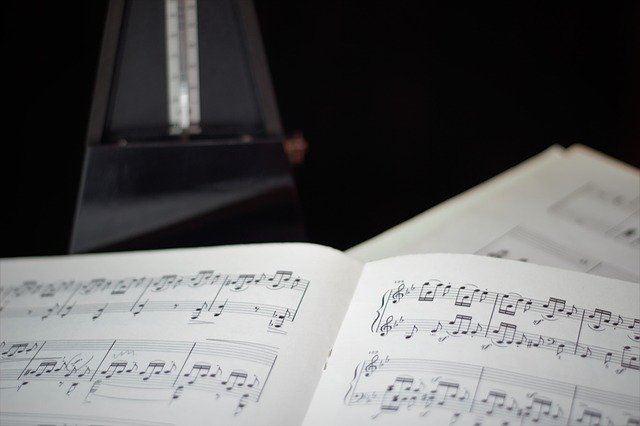Recording to a click track/metronome will not make your music sound robotic, sterile or lifeless. It will just make your music sound better.
Clicks Make Hits
The use of click tracks when recording is polarising. Some say that recording with a click as opposed to just following your own (or your drummers’) time can result in an ‘unnatural’ feel to the music. Some insist that by not following a click, the music will feel livelier and more ‘real’, creating a more raw and exciting vibe.
I disagree. Recording to a click track, whether as a solo artist or a band, makes for a better result 99% of the time (providing everyone is comfortable playing to one).

It will still sound real and lively as long as it’s been played by a human. Even when playing to a click, there will still be nuances and slight timing differences between beats. Especially these days, where electronic music, sampling and loops are so common, a human playing will still create a noticeable contrast.
Watch/listen to this article instead:
There are three main reasons why click tracks can make your music sound better –
1. You’ll Be In Time
If you play to a click, your music will be at a consistent BPM (beats per minute). Music that’s in time sounds better to the average listener and the average listener won’t know why. Music that’s in time doesn’t stick out as being doctored or over-produced in any way, it just comes across as though it was played well.
Not only does it sound better when it’s in time, it feels better. Even if you’re not making dance music, people still move to music or simply feel the rhythm.
The beauty of a modern DAW means that you’re not restricted to one BPM measure throughout either. If the tempo changes throughout the song, you can set this beforehand in the DAW to change itself at the right time.
2. Editing
In my eyes, making a record in a studio is about producing a song to the best version of itself it can be. Live music is about experiencing the performance, but a studio recording is about putting forward the true vision for a song and preserving it. Sometimes that means edits and tweaks have to be made.
If you’ve recorded to a click, it makes edits SO MUCH easier. Moving sections if a band changes their mind on the structure post recording, swapping out solos, lining up risers and samples… All of it becomes much quicker and easier if a click has been used. And ultimately, editing is not always what we want to be spending our time with. Anything that speeds up that process is a plus.
3. Time Based Effects
In-time delays are important to keep them from sounding jarring. Having the audio recorded to a click makes this a lot easier to achieve. As soon as you drop the effect in most delays will match up to the BPM set in your DAW. If you haven’t recorded to a click, you can often set the delay up with a manual length in milliseconds. It’s unlikely that what you set this as will be the correct time for the whole passage or song, though. What’s more, it’s just one more extra unnecessary step.

To Click or Not to Click?
When you’re next in the studio, give the click a chance and see how it feels to play to. If you can get over the perceived ‘unnaturalness’ of it, you might find that the result sounds a lot tighter. Or, if you’re recording others and they’re sceptical of recording to a click track, it’s worth going through some of the benefits with them. Ultimately though, this is the musicians decision, and there are cases where the piece may not suit a click, a completely free-form piece for example. Or, you or the other musicians might simply not feel comfortable with listening to a click, and may find it off-putting.
But to those who are happy to play to a click, just remember, a click won’t make you sound like a robot. Ultimately, it will help you to sound more professional and in time.
Find out how to set up a click track in Pro Tools. Do you use a click track? If not, do you think you’ll be considering using one at your next recording session? Drop a comment below!